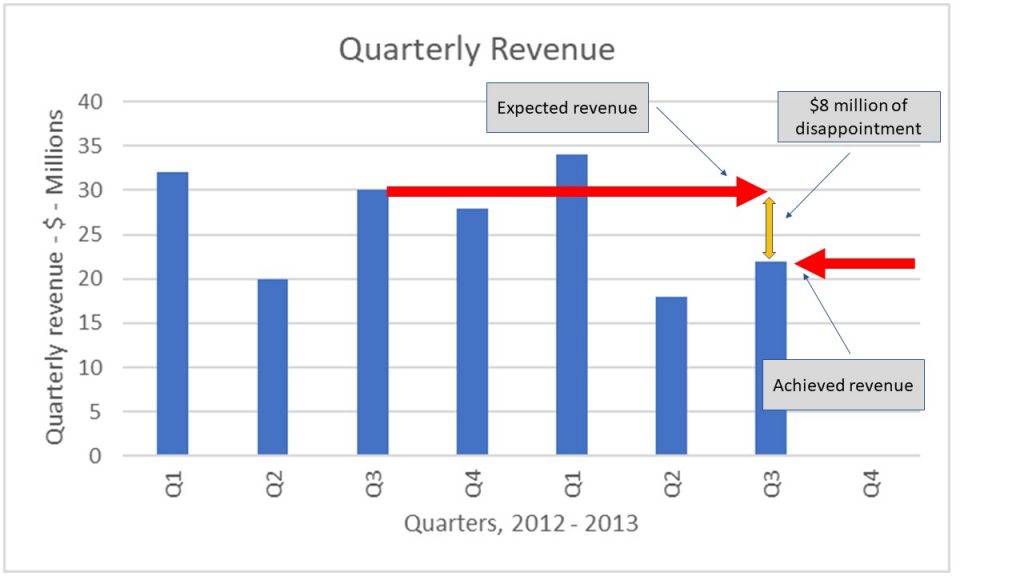Avoiding CEO revenue rage
You have probably seen it happen a few times. Revenue drops. Your CEO is surprised. The offending region, major account and/or business line benefits from a CEO ‘coaching opportunity’ about the unsuitability of this occurrence and the explicit desire never to see a repeat performance.
 The interesting thing about this event is that it happens frequently, recurs often and is usually avoidable. With a bit of preparation, you can predict revenue will be with much greater accuracy. And with a bit more work you can be confident that your sales staff are taking the actions required to avoid the event altogether.
The interesting thing about this event is that it happens frequently, recurs often and is usually avoidable. With a bit of preparation, you can predict revenue will be with much greater accuracy. And with a bit more work you can be confident that your sales staff are taking the actions required to avoid the event altogether.
Reliable revenue
In a company with contracts, tomorrow’s revenue can be determined with confidence. For each contract, simply work out how many weeks duration remain and put an equal part of the remaining revenue into each week. Add up your contract revenue in each week to get a good idea of the revenue you can probably rely on. To which you need to add the revenue you might possibly count on.
Possible revenue
To find out how much additional revenue you may deliver, simply add all of your future revenue, reducing the value of a sale by the probability of sale. It is possible to make this incredibly complex. Don’t. Start with some simple rules and change these as you get more experience but fight against the feeling that infinitely increased complexity will infinitely increase accuracy – it will not.
A good way to start is:
- Awarded contracts: It is tempting to estimate contracts that you have won, but have not started at 100% of their value. Be careful of this. They often disappoint suffering delays to their starting point and reductions in both value and duration. Discounting them at 80% of their face value is a good place to start
- Won not awarded: You have won the bidding but have not yet been awarded the contract: allocate 70% of the revenue over the contract life but delay the starting time by 50%
- Sole bidder: Allocate 50% of the contract to your revenue funnel. Double the client’s estimated time to start
- Scope writer: Allocate 40% of the contract to your revenue funnel. Double the client’s estimated time to start
- Bidder: Allocate 20% of the contract to your revenue funnel (lower if more than 3 parties have been requested to put in bids). Double the client’s estimated time to start
Predicting revenue
Once you are able to combine these different opportunities, you will get a simple revenue horizon that you can use to more accurately anticipate monthly delivery. It will show you the impact of large existing contracts moving out of your portfolio and allow you to plan resources accordingly.
This approach is simply a starting point. With a unique product, strong customer relationships, or highly competitive marketplaces the risks can go up or down. And with an experience in managing the funnel, a database of examples and an understanding of yearly and seasonal vaiations to refer to you will be able to make changes to improve it further. But … this is not a bad place to start from. And it is not a place that you want to move too far from, as adding complexity increases your confidence in a prediction that will always have a high level of uncertainty.
But what do you have to do to make sure that your sales force are taking the actions you need to avoid revenue declines?
